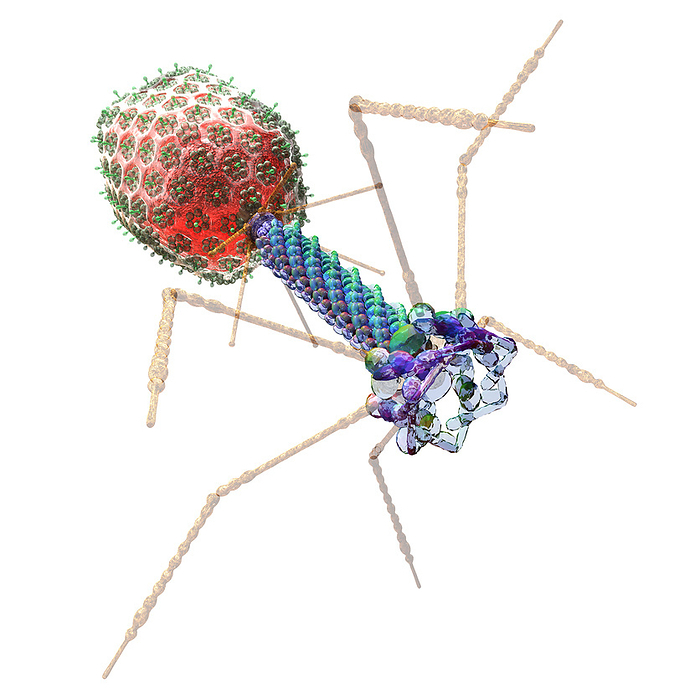
RM
Bacteriophage, illustration
Bacteriophage, illustration. A bacteriophage, or phage, is a virus that infects bacteria. It attaches to the surface of a bacterium via its long tail fibres and injects the genetic material contained in the capsid head into the cell. The viral genetic material then hijacks the bacterium's own cellular machinery, forcing it to produce more copies of the bacteriophage. When a sufficient number has been produced, the phages burst out of the cell, killing it. Phages are a possible therapy against multi-drug-resistant bacteria., by RUSSELL KIGHTLEY/SCIENCE PHOTO LIBRARY

More
Top Categories
